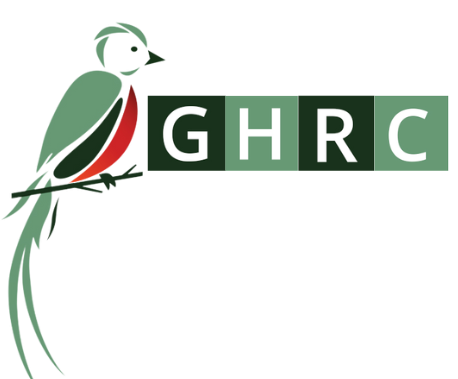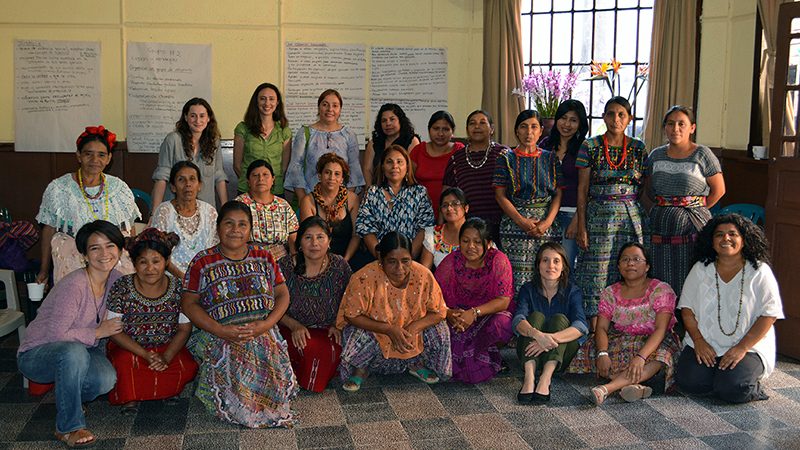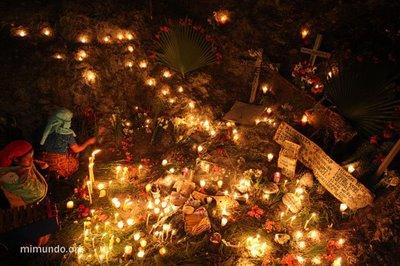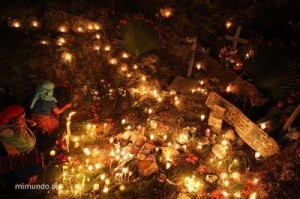 Five massacres occurred in the Rio Negro (“Black River”) communities between 1980 and 1982. The people of Rio Negro (named after the nearby river) had occupied the region since the classic Mayan age and owned 1,440 hectares of land. During the energy crisis of the 1970’s the Guatemalan government looked for local energy alternatives, creating the state-owned National Institute of Electrification (INDE). In 1975 INDE unveiled plans to dam the Rio Negro, also called the Chixoy River, to provide the country’s electricity, which would flood 31 miles of the river valley. Funds from the Inter-American Development Bank, Italian company Cogefar-Impressit, and the World Bank were used in the construction of local roads and the dam itself.
Five massacres occurred in the Rio Negro (“Black River”) communities between 1980 and 1982. The people of Rio Negro (named after the nearby river) had occupied the region since the classic Mayan age and owned 1,440 hectares of land. During the energy crisis of the 1970’s the Guatemalan government looked for local energy alternatives, creating the state-owned National Institute of Electrification (INDE). In 1975 INDE unveiled plans to dam the Rio Negro, also called the Chixoy River, to provide the country’s electricity, which would flood 31 miles of the river valley. Funds from the Inter-American Development Bank, Italian company Cogefar-Impressit, and the World Bank were used in the construction of local roads and the dam itself.
The Rio Negro communities were notified that they would be relocated and the 150 families would receive two to three hectares of land. A local committee negotiated with INDE officials for a permanent settlement in Pacux, near Rabinal. After a violation of the agreement, 20 families moved back to their community, while dam construction began. During early construction, a French firm was hired to excavate Ancient Mayan objects, desecrating the sacred land in the eyes of the local communities.
Five years after the plan was proposed, in March 1980, violence broke out between the local community and the developers when two men were accused of stealing coffee beans from Cogefar-Impressit and arrested. A confrontation broke out between the village and three security officers chased the men back to their village. The officers were then rounded up by the villagers and brought to the Church where one officer was hit by a community leader. The officer then opened fire, killing seven villagers. The officers fled and one was injured and drowned crossing the river. That July two villagers asked to bring a written agreement to the dam site were found murdered a few days later and the written documents were lost.
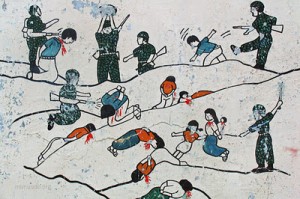 In 1981, the Guatemalan government began destroying villages as part of the scorched earth campaign, and relocating communities in ‘model villages’ that could be easily controlled and monitored by the army and also provide cheap labor to neighboring towns. The government also created Civil Defense Patrols, made up of armed locals, often forcefully recruited. One such patrol was created in the village of Xococ, near Rio Negro.
In 1981, the Guatemalan government began destroying villages as part of the scorched earth campaign, and relocating communities in ‘model villages’ that could be easily controlled and monitored by the army and also provide cheap labor to neighboring towns. The government also created Civil Defense Patrols, made up of armed locals, often forcefully recruited. One such patrol was created in the village of Xococ, near Rio Negro.
In February 1982, villagers in Rio Negro were instructed to bring their identification cards to Xococ. When the villagers reached the town they were murdered by the Xococ Patrol. One woman escaped and returned to Rio Negro to warn the other villagers. The men of the village decided to flee and hide in the hills leaving the women and children in the village, under the assumption they would not be harmed. The next month Civil Patrols from Xococ arrived in Rio Negro, under the pretense of guerrilla activity in the area, and massacred the women and children, killing 177.
Two months later, 84 more people were killed in ‘Los Encuentros’, Rio Negro, and fifteen women were abducted. Then, in September, 92 villagers were burned alive, including survivors of previous massacres. Of Rio Negro’s almost 800 Maya-Achí inhabitants, 444 were killed in the massacres between 1980 and 1982.
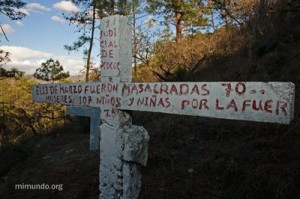 The 33 communities affected by the construction of the Chixoy Dam entered into negotiations with the Guatemalan government for integral reparations. The reparations package included an unprecedented budget for long-term community development. It was agreed to by President Colom, but he never officially signed and the reparations were not implemented.
The 33 communities affected by the construction of the Chixoy Dam entered into negotiations with the Guatemalan government for integral reparations. The reparations package included an unprecedented budget for long-term community development. It was agreed to by President Colom, but he never officially signed and the reparations were not implemented.
A case was also taken to the Inter-American Commission on Human Rights (IACHR) for integral reparations for the massacres that took place. Representatives from Rio Negro and the victims’ association ADIVIMA met with the IACHR in March 2010 to request that their case of the five massacres at Rio Negro be moved to the Inter-American Court in Costa Rica. ADIVIMA and international partners including GHRC, continue to push for justice for the massacres, and reparations for dam-affected communities.
Learn More:
- Guatemala’s Chixoy Dam: where development and terror intersect (The Guardian)
- Report: Generating Terror (UK Jubilee Debt Campaign)
- Chixoy Dam: No Reparations, No Justice, No Peace (Video from Lazar Konforti)
